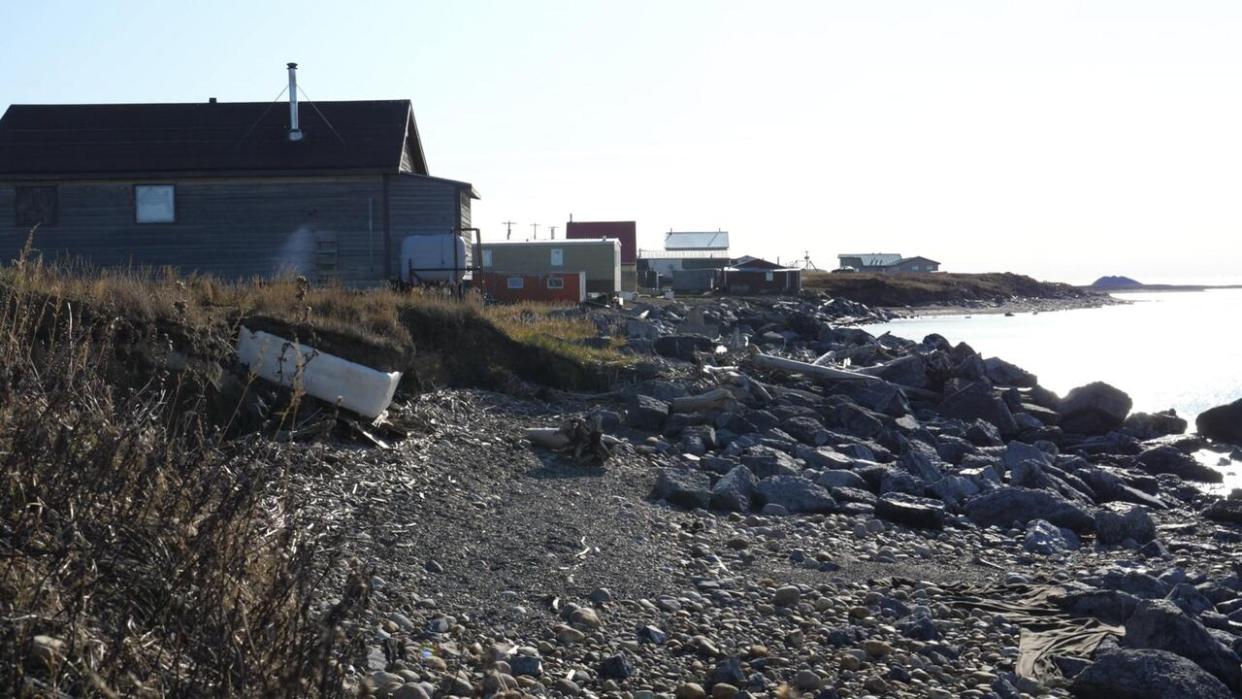Officials still optimistic about shoreline protection in Tuktoyaktuk, N.W.T., despite project setbacks

Officials in Tuktoyaktuk, N.W.T., are staying confident their plan to protect the shoreline of their community from ongoing erosion will be successful, even though winter storms and a shortage of certain rocks meant they only completed 50 per cent of the work they planned to do this spring.
The first phase of the plan is done. That involved lining the shore with large rocks and geotextile matting to slow the effect of the waves on the beach and shore.
The second phase focuses on Tuktoyaktuk Island which protects the harbour from ocean waves.
Charles Klengenberg is the projects manager with the hamlet office. He says even though the work wasn't done as far down the shore as they intended due to a shortage of bigger boulders, the crews were still able to lay down smaller rocks along the shore to help mitigate the wave effects on the beach.
"That will help in case there are any storm events this fall. We are satisfied with that approach until they can restart [the work]," said Klengenberg.
"I think the road was closed for a week to 10 days this spring so that slowed down the hauling of rock from Inuvik."
Klengenberg said there "some quarry issues" that meant work crews couldn't find the right amount of rock they needed for the design.
Rocks were brought north from a quarry near Inuvik for the project. Dozens of truckloads of large boulders were strategically placed along the eroding shoreline in Tuktoyaktuk.
The Hamlet of Tuktoyaktuk was given funding from Infrastructure Canada to do the work, which included consultations on how to protect the shoreline from erosion and also help slow the thaw of the permafrost.
'It won't stop it, unfortunately'
This summer the hamlet is hauling in loose gravel to add to 250 metres of shoreline beach, and help the area from being washed out.
The work is anticipated to continue in January 2025 once crews build an ice road to the island and complete the work to the community shoreline as well.
Noella Cockney is one of the residents who had a house that was moved away from the eroding shoreline. Her family home was moved in 2020.

Noella Cockney at her home in Tuktoyaktuk, N.W.T., in 2019. Her family home was moved in 2020 because of the eroding shoreline. (Weronika Murray/Submitted by Noella Cockney)
She is happy the hamlet is ramping up efforts to protect against erosion, but she saw also saw first-hand that there's no permanent fix.
"I think it'll delay it a bit, like it delayed it a bit the first time, but it won't stop it, unfortunately," said Cockney.
Having a house right on the Arctic coast was something that Cockney's family had pride in for generations.
"That's where my parents lived, and my dad's parents lived as well. It's been very important to a lot of people to live there," she said.
Another landmark in the community that is at risk from erosion is the cemetery beside the nursing station.
"It'll be heartbreaking for everyone in the community if they end up having to relocate all the individuals in the graveyard," said Cockney.
She believes the addition of a wave-break on the ocean side will help protect against the effects of the erosion on that side of the community.
"That will alleviate most of the big waves from eroding a lot of the shoreline on the ocean side," she said.


